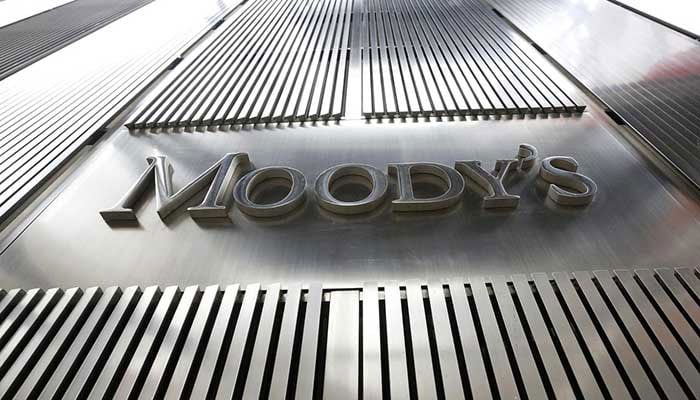Moody's upgrades Pakistan's banking sector outlook to 'stable'
March 08, 2024

- Banks profitability helped withstand macroeconomic challenges.
- Economy will return to modest growth of 2% in 2024: Moody's.
- Moody's expects banks’ modest capital ratios to remain stable.
ISLAMABAD: Moody's Investors Service upgraded Pakistan's banking sector outlook to "stable" from "negative" based on macro challenges and easing fiscal pressures which helped withstand the political turmoil in the country, The News reported on Friday.
The credit rating agency stated in its report: "Persistent external pressures against a challenging operating backdrop will weigh slightly on the performance of Pakistani banks’ loan portfolios."
The banks’ solid profitability and stable funding and liquidity provide an adequate buffer to withstand the country’s macroeconomic challenges and political turmoil, it stated.
“Economic and fiscal pressures are easing, and the Pakistani economy will return to modest growth of 2% in 2024 after subdued activity in 2023, and inflation will fall to around 23% from 29% last year.
“Pakistani banks remain highly exposed to the government via large holdings of government securities that amount to around half of total banking assets, which links their credit strength to that of the sovereign," added the report.
It further said: “Profitability will remain strong because of wide net interest margins but decline from 2023 peaks because of subdued business growth, increased funding costs on the back of higher rates, and elevated taxes."
Moody's said that it expects the banks’ modest capital ratios to remain stable, as strong earnings offset high dividend payouts. "Banks’ stable deposit-based funding will continue to support financial stability," it added.
“However, high-interest rates and inflation will continue to curb private-sector spending and investment. Furthermore, banks are financing the sovereign’s wide fiscal deficits, leaving little space to lend to the real economy."
The rating agency said that the problem loan ratio of the Pakistani banks’ rate rose to 8.5% as of September 2023, up from 7.3% in December 2022, following severe shocks that subdued economic growth and as historically high inflation and interest rates eroded borrowers’ repayment capacity.
“We expect problem loans to stabilise at around 9% of gross loans, partly because of the banks’ reluctance to lend in this challenging environment (loan growth was flat in 2023). The expected introduction of IFRS 9 accounting standards in 2024 will likely increase provisioning needs," said the agency.
Operating expenses will likely stabilise in line with easing inflation and banks’ cost-control efforts, said Moody's, adding that persistently elevated tax rates and potentially higher loan-loss provisions will weigh on banks’ bottom-line profitability, with the return on average assets hovering around 3%.
“Stable funding and liquidity are a strength. Deepening financial inclusion and remittances from non-resident Pakistanis are broadening domestic deposit inflows. Banks are mainly deposit-funded, with customer deposits accounting for 58% of total assets as of September 2023, and have a very low reliance on more volatile market funding (5.6% of tangible assets as of December 2022), given limited access to international debt markets.
“However, the cost of funds is rising moderately as high-interest non-interest-bearing rates have driven a migration to interest-bearing deposits from non-interest-bearing deposits, which were down to 74% of total system deposits as of end-2023 from 75.2% a year earlier," said the credit rating agency.
The report noted that the introduction of a Treasury Single Account — which requires government deposits to be held at the State Bank of Pakistan — will have only a modest impact on deposit outflows.
"Banks have sufficient liquidity buffers, with around 12% of assets held as cash and interbank placements and another 51% invested in government securities. However, we estimate that around 40% of banks’ government securities holdings are encumbered, and placed as collateral with the central bank, with the newly raised liquidity used to buy more government bonds
“Pakistani banks have limited reliance on dollar funding and generally run matched currency positions. The government has demonstrated a willingness but limited capacity to support banks," it noted.





